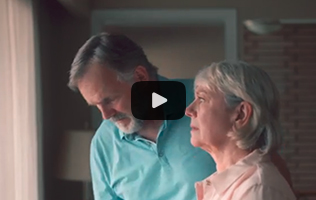As we draw closer to the end of the year, I find myself thinking more often about the future. Not in a far-off, abstract way, but in the very practical sense that comes with aging: How long can I stay in my home? What will it take to manage well, to feel safe, and to continue living in a place that brings me comfort? These questions drift through my mind more frequently now, surfacing whenever I’m out walking or even just making tea.
Why Aging in Place Matters in Ontario
If you read my columns regularly, you may recall that I live in Bronte, on the western edge of Oakville in Ontario. Years ago, it was a quiet sailors’ village, a little off the beaten path, with small storefronts and modest houses that felt rooted in the past. Today, Bronte is bustling. New high-rises dot the waterfront, and modern homes — sometimes surprisingly large — are built where older structures once stood. Even with all this change, the village feel hasn’t disappeared entirely. You can still sense it in the slower rhythm of the streets and in the familiar faces that appear in the most ordinary places.
One of the reasons I feel so strongly about staying here is the lake. Living close to the water softens everything: the summer heat, the winter chill, and sometimes even the emotions of the day. When I take my eight-month-old puppy for a walk along the path beside the lake, the stillness calms me. There is something reassuring about the water’s steady movement and the way the horizon seems to hold space for whatever thoughts I bring to it. These walks have become small moments of grounding, reminders of how much I value the peace and natural beauty right outside my door.
The shops along Lakeshore help sustain that sense of belonging. Many have been around for decades; they’ve witnessed the same changes I have and weathered them. When I stop by for a coffee or a greeting card, I often know the person behind the counter. Even the community mailbox, set before a tiny neighbourhood park, has become part of my daily ritual. A quick trip to pick up the mail frequently turns into a warm conversation with someone from down the street. These small exchanges add up. They create a sense of home that can’t be replaced by convenience alone.
Practical Support for Aging in Place: Healthcare, Services and Daily Life
For practical life, too, Bronte serves us well. The regional hospital is close and offers excellent care. My doctor, dentist, lawyer, and accountant — all in Oakville — have been steady sources of guidance and support. These relationships form the quiet scaffolding that keeps life running smoothly, and I’m grateful for them.
Yet with all of this comfort, I still wonder: How long can my husband and I realistically maintain everything? A home, no matter how loved, requires upkeep. Bodies require care. And time has a way of reminding us that it’s always moving forward.
Recognizing the Challenges of Long-Term Care
Recently I read a report about demand for long-term care across Ontario. I won’t repeat the numbers here — they vary, and statistics can shift from year to year — but the general message was clear enough: as the population ages, resources are stretched. Spaces in long-term care homes are limited, and the system faces increasing pressure.
What Aging in Place Really Requires
Reading that report made something click for me. It reminded me that “aging in place” is not only a desire — it’s a plan, or at least it needs to be. If I want to remain in my home as long as possible, I need to think ahead. Not in a fearful way, but in a practical, steady, thoughtful way.
And I know I am not alone in this. Friends around my age are having similar conversations. Some are looking into personal support services. Others are researching home-care options long before they need them. Many speak about small modifications — railings, better lighting, easier-access storage — that can make daily life simpler and safer. These are not dramatic shifts, but they acknowledge a truth we are all learning: independence doesn’t happen automatically. It is something we have to prepare for.
Preparing to Age in Place While Staying Rooted in Your Home
As I look ahead to the coming year, I hope to learn more about what aging in place truly requires — not as an abstract idea, but as a lived plan. I want to understand the services available, the supports most people don’t know about until they need them, and the small changes that can make a big difference. I want to feel prepared, not anxious.
For now, though, I’m focusing on what is in front of me. The comfort of home. The companionship of my puppy. My family and my friends. The community that reveals itself in casual conversations at the mailbox or quick chats in village shops. The steady presence of the lake. These are the things that give shape to my days, and they help me feel rooted as I think about the future.
And perhaps that is what aging in place really means: recognizing the value of where we are, acknowledging the changes that come with time, and finding ways — practical, emotional, and communal — to remain connected to the places that have shaped us.






























